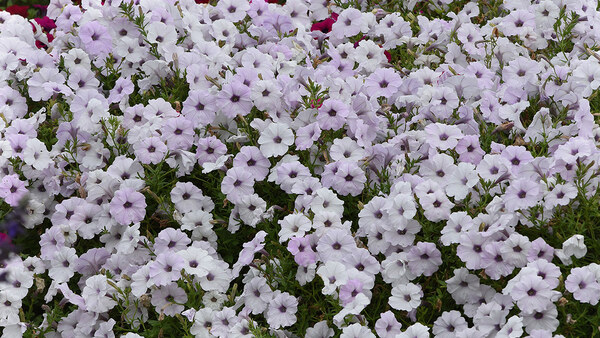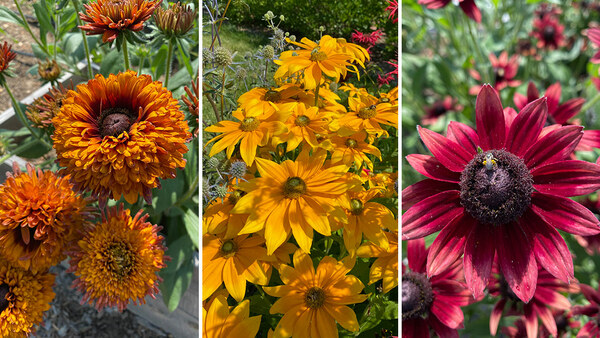
We are fortunate in the southeastern United States to be able to grow a wide variety of trees, shrubs, and herbaceous perennials in our temperate climate. During our long growing season, we can additionally grow a vast array of annual and tropical plants that offer high-impact bursts of color to our landscape. When visiting a garden center, particularly at the beginning of the growing season, making the right choices is not always simple. Frankly, with all the new plants on the market, it’s not always easy to look into the future when you’re picking annual plants.
Trust your local nursery
First, I strongly recommend independent garden centers as one of the best choices for unique and reliable annuals. These retailers are often staffed with people who live and garden in our region. Additionally, they are more aware of new varieties. This past spring while I was visiting my regular grocery store, I saw racks and racks of annuals out front. Many of the choices being offered were outdated selections or bad choices for the Southeast. A good independent garden center would have moved on from these varieties long ago.
Hot vs. cool colors
One of the first things I think about when making choices about annual plant combinations is if I want hot or cool colors. This choice determines the overall feel of the design. It expresses the emotions you hope will be invoked in visitors as they visit your garden. There are virtually unlimited plants to choose from to make hot or cool color combinations. I’ll admit that reducing annual plant choices to hot and cool colors is a bit simplistic. However, it is a good place to start. Below are my favorite hot and cool combinations for the Southeast.

Dense, shrubby forms and an explosion of fiery color make this combo perfect for a border
Plant combinations that feature hot colors like red and yellow draw the eye into the landscape. If you have an area of your garden that you want to draw visitors toward, this is just the combo you are looking for.
- Vermillionaire® firecracker plant (Cuphea ‘Cupver’)
- Profusion Red Yellow Bicolor zinnias (Zinnia cv.)
Vermillionaire® is one of the strongest workhorse annuals I have ever seen. Abundant yellow, orange, and red flowers decorate this plant during the entire growing season. It looks good in May, and it looks good in October. A bonus is that migrating hummingbirds will take advantage of nearly every blossom. Pairing this plant with the newly crowned All-America Selections winner Profusion Red Yellow Bicolor zinnias might be just what you need to take your garden to the next level. I am a fan of the Profusion series of zinnias, and this might be the best one yet. Bred by Sakata Seed Corporation, this little annual was given the Gold Medal by AAS and was broadly trialed in the Southeast.

Pinks and purples bring out the color of plain green foliage and sparkle in the shade
Plant combinations that feature cool colors can be calming and make a small space seem bigger. If you are looking for cool colors, the following is a top combination.
- Bubblegum® petunia (Petunia ‘USTUNI6001’)
- ‘Fireworks’ gomphrena (Gomphrena pulchella ‘Fireworks’)
Neither of these two plants is new to the market. In fact, each had its debut over 10 years ago. However, each still holds its own against any variety released in the proceeding 10 years. With a weeping and trailing habit, Bubblegum® petunia doesn’t mess around in the garden. I truly cannot imagine a pink-colored trailing petunia performing any better. Nonstop flowering in a tough plant that can bounce back even when neglected makes this one of my favorite annual plants. Combining this low, ground-hugging petunia with the vibrant upright display of ‘Fireworks’ gomphrena makes for a can’t-miss combination. ‘Fireworks’ has a unique scaffolding habit that adds architecture to this pairing. Gomphrenas in general are tough-as-nails, and their spent flowers remain attractive on the plants long into the season. And both plants will cover a good amount of real estate in the garden by season’s end. As far as annual displays go, this one will give you a lot of bang for your buck.
The above two combinations are just the start. I find thinking about annuals in terms of hot and cool colors helps me pair plants that are truly complementary. When choosing annuals in general, start by picking plants with proven track records of blooming the entire season. Next, think about picking plants with different textures, heights, and habits. Most of all, have fun; if something doesn’t work out, it’s only for a year.
—Andy Pulte is a faculty member in the plant sciences department at the University of Tennessee.


















Comments
Log in or create an account to post a comment.
Sign up Log in